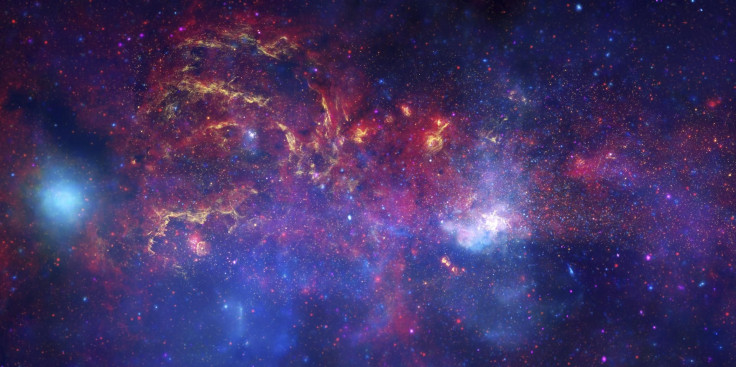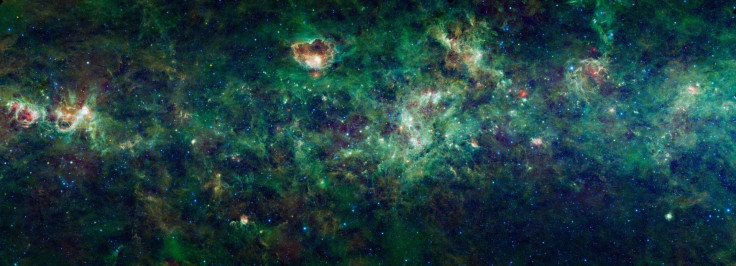4 NASA Photos Show Stunning Views Of The Milky Way Galaxy

Scientists have used fancy telescopes to take numerous photos of galaxies around the universe, but we still don’t have any complete pictures of our own. The Milky Way galaxy is massive, and we can’t take a single image of the whole thing unless we were to travel really far away and actually leave it.
Our instruments have barely made it out of the solar system: The Voyager 1 and Voyager 2 spacecraft launched in 1977 and are billions of miles away from Earth, but they have only recently reached interstellar space. That description of their headway only counts, however, if you don’t consider the icy rock material hanging out in the Oort Cloud that surrounds the sun and the planets, and will take many more years to travel through, part of the solar system.
It will be a long time before we can see our entire galaxy all at once, looking down on it from above. But until then, we have some pretty spectacular views from its different neighborhoods.
A core issue

The Milky Way galaxy has one of the most common shapes out there: a spiral. The entire thing looks like a disk and surrounding the dense core are arms sweeping around the entire thing. Our solar system is located roughly in the dead middle of the spiral area, which just goes to show you how average we really are.
Earth and sky

An astronaut aboard the International Space Station, which orbits Earth, took this image of lightning striking down on our planet. Sitting above the clouds at night, Kjell Lindgren got a good view of part of the Milky Way galaxy — the milky (surprise!) streaks among the stars.
Constellation of images

Stitching together a number of photos can give us a larger view of the galaxy than a single image would allow. In this mosaic from NASA’s Wide-field Infrared Survey Explorer, the stars of the constellations Cassiopeia and Cepheus are visible. Cassiopeia is shaped like a “W” and Cepheus is meant to look like a royal on his throne — the two constellations were designated in honor of a vain queen and her husband, a Phoenician king, from Greek mythology.
Someone’s crabby

It is fitting that the Crab Nebula looks like a fiery explosion because it is the remnant of one of the biggest kinds of booms you can find in the universe. Earth observers first noticed the supernova that created the nebula in the year 1054, according to NASA. The Crab Nebula that was left behind is about 10 light years across and contains a rapidly spinning neutron star — the dead body of the star that exploded in the supernova — that rotates about 30 times a second and is known as a pulsar. That super-dense body has as much mass as the sun but it is all packed into “the size of a small town.”
© Copyright IBTimes 2025. All rights reserved.



















